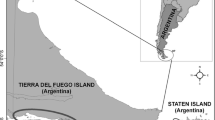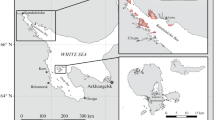Abstract
Antarctic seabird populations have been much studied over the last decades as bioindicators of the nature of variability in the Southern Ocean marine ecosystem, and most attention has been focused on the role of food supply and the extent of sea ice. In addition, the rapid spread of tourism and the activities of researchers since the early 1960s have raised questions related to their real and potential impact on bird populations. Our data sets start in 1952 for several species of Antarctic seabirds and this study documents the trends over a 14-year period (1985–1999) in seven species breeding on Pointe Géologie archipelago (Terre Adélie, Antarctica). This is the first study where the direct impact of destruction of breeding sites (for building of an airstrip) is examined and where such long-term populations trends have been assessed in such a number of Antarctic species at one site. Trends from 1985 show that for the whole archipelago and when excluding islands destroyed, Adélie penguins and south polar skuas were the only species to show a significant increase (>3.5% annual change). The others species showed opposite trends, three increasing slightly (southern fulmars +0.4%, cape petrels +2.3%, snow petrels +0.9%) and two decreasing (emperor penguin −0.9%, southern giant petrel −3.9%). Three species particularly affected by the destruction of their breeding habitat (Adélie penguin, cape petrel, snow petrel) showed the capability to restore their populations. The availability of food and nesting sites is discussed in relation to environmental change. Species feeding on krill (Adélie penguins and cape petrels) increased more than other species; however, decrease of ice cover can increase availability of nesting sites. The importance of long-term studies is shown when assessing the role of human activities in Antarctica compared to larger-scale changes.
Similar content being viewed by others
Author information
Authors and Affiliations
Additional information
Accepted: 18 September 2000
Rights and permissions
About this article
Cite this article
Micol, T., Jouventin, P. Long-term population trends in seven Antarctic seabirds at Pointe Géologie (Terre Adélie) Human impact compared with environmental change. Polar Biol 24, 175–185 (2001). https://doi.org/10.1007/s003000000193
Issue Date:
DOI: https://doi.org/10.1007/s003000000193




